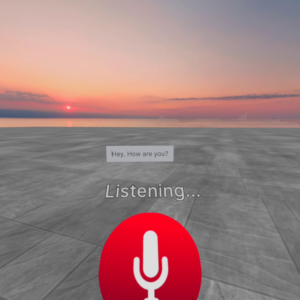The VR remote collaboration platform Arthur has just announced a slew of new updates ranging from aesthetic to immensely powerful and practical. Arthur has been on the ARPost radar for a while now but they haven’t gotten a proper write-up, so let’s crack in.
What Is Arthur?
Arthur is presented as, essentially, a digital real estate company in the business of “virtual office space.” This office space is complete with whiteboards, 3D objects, file management tools, and other resources that you would very well expect from a physical coworking environment. The largest clients are those with workforces and clientele that are widely geographically dispersed.
“We see ourselves as a virtual real estate company. We just provide the office,” Arthur Technologies Demand Manager, Simon Berger, told ARPost in a recent remote interview. “This is a virtual office.”
The remote collaboration company was founded in 2016 but launched in December of 2020. The updates announced in early May 2021 were the first round of major updates and incorporate feedback from the platform’s early users.

“We’re continually finding ways to adapt to the evolving needs of our clients and are looking forward to what’s next for Arthur,” Arthur CEO and Founder Christoph Fleischmann said in a release shared with ARPost.
What’s in the Update?
The update brings four principle benefits: audio zones, increased room capacity, a speech-to-text feature, and an updated avatar system. The audio zones and speech-to-text feature are only for the Professional edition, which is currently still in beta. All other updates are also coming to the Consumer version, which is free on the Oculus Store.
Audio Zones
 This new feature creates designated and marked zones that users will be able to use to have private conversations that users outside of the zones cannot hear. The function is handy for events like team-building exercises, as well as for spin-off discussion sessions from larger conversations.
This new feature creates designated and marked zones that users will be able to use to have private conversations that users outside of the zones cannot hear. The function is handy for events like team-building exercises, as well as for spin-off discussion sessions from larger conversations.
Increased Room Capacity
Both the enterprise and consumer versions of Arthur’s remote collaboration application are getting an increased room capacity, with over 50 users allowed to occupy a room simultaneously in the enterprise version. Maximum capacity for consumer sessions is not made available.
Speech-to-Text
The speech-to-text function creates a text log of spoken audio. This is handy for hearing-impaired users but it also makes spoken content easier to record and reference.
An Updated Avatar System
The updated avatar system creates a near-photo-realistic avatar, complete with facial tracking. The avatar design system also has more customization options in terms of wardrobe. While not all providers and users see avatars as a crucial part of remote collaboration, it’s quickly becoming a pillar for Arthur.
![]()
Facial tracking had been a sticking point for the platform’s avatar system in the past. Designers thought that realistic avatars with mouths that didn’t talk and eyes that didn’t move would unnerve users, so the previous generation of avatars had headsets and microphones that blocked the eyes and mouths. Which was maybe just as creepy.
The Remote Collaboration Ecosystem
It’s exciting to see these updates to Arthur, as they make the platform more competitive among VR remote collaboration platforms. For example, the audio-zones feature was already a feature of Virbela and FRAME. Similarly, talk-to-text was launched in a FRAME update last month.
That’s not to say that Arthur doesn’t bring anything new to the remote collaboration table. Virbela and FRAME can both be described as desktop-first. While the platforms are compatible on headsets, Virbela in particular is usually used in longer sessions. Arthur, on the other hand, is meant for shorter sessions and is decidedly headset-first.
“The goal [of Arthur] was to try to combine the magic of meeting in-person with the benefits of digital collaboration,” Berger told ARPost. If talk-to-text isn’t a prime example of that, I don’t know what is.




